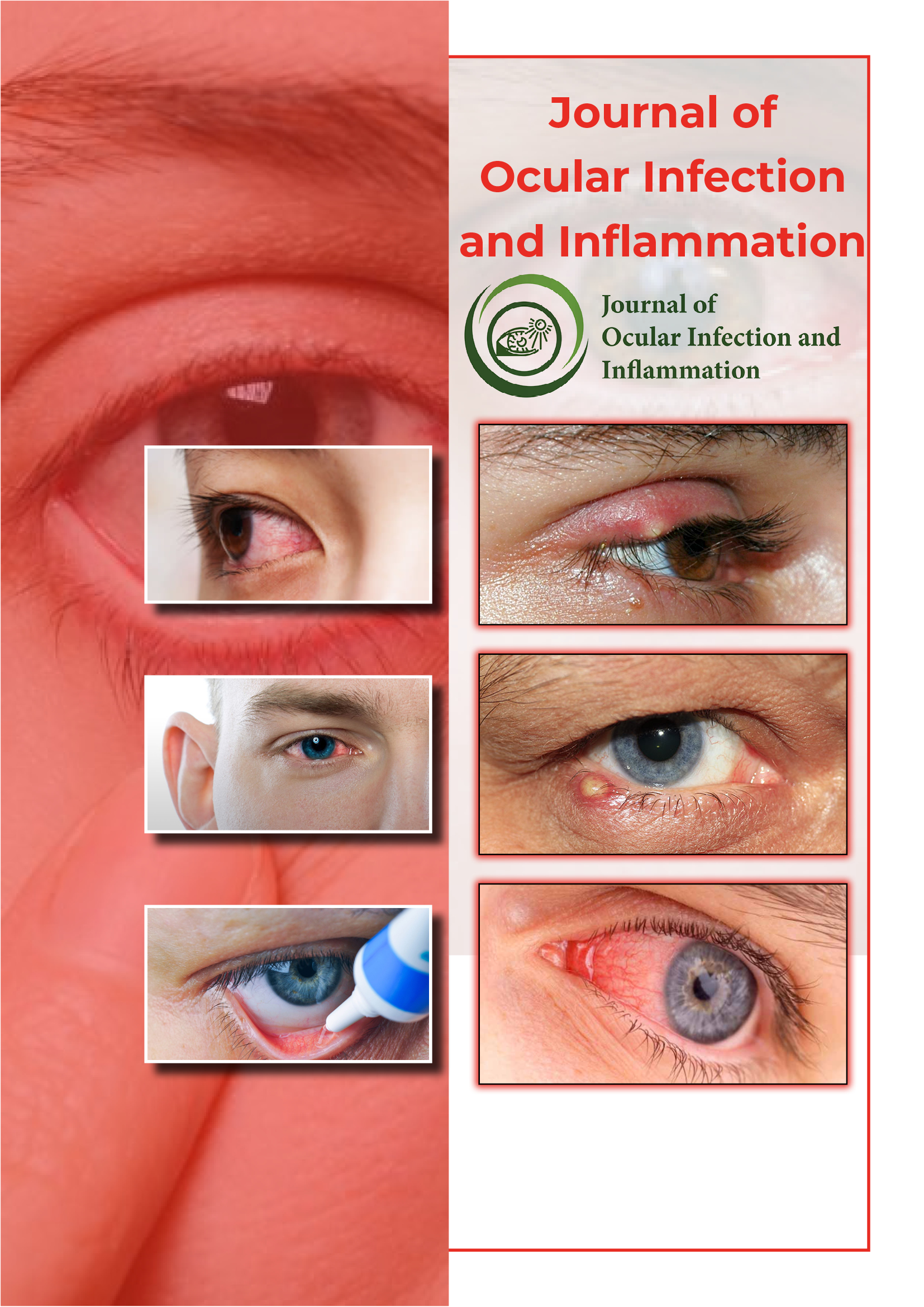Useful Links
Share This Page
Journal Flyer

Open Access Journals
- Agri and Aquaculture
- Biochemistry
- Bioinformatics & Systems Biology
- Business & Management
- Chemistry
- Clinical Sciences
- Engineering
- Food & Nutrition
- General Science
- Genetics & Molecular Biology
- Immunology & Microbiology
- Medical Sciences
- Neuroscience & Psychology
- Nursing & Health Care
- Pharmaceutical Sciences
Perspective - (2024) Volume 5, Issue 1
Advancements in Diabetic Retinopathy: Early Detection and Treatment Strategies
Ying Cheng*Received: 26-Feb-2024, Manuscript No. JOII-24-25613; Editor assigned: 28-Feb-2024, Pre QC No. JOII-24-25613 (PQ); Reviewed: 13-Mar-2024, QC No. JOII-24-25613; Revised: 20-Mar-2024, Manuscript No. JOII-24-25613 (R); Published: 27-Mar-2024, DOI: 10.35248/JOII.24.05.117
Description
Diabetic Retinopathy (DR) stands as one of the most common complications of diabetes and a leading cause of blindness among working-age adults worldwide. The frequency of diabetes continues to rise globally, leading to an increasing burden of DR. However, with early diagnosis and effective treatment strategies, much of the vision loss associated with DR can be prevented or delayed. This perspective article aims to explore the importance of early detection and discuss the latest advancements in treatment methods for diabetic retinopathy.
Exploring diabetic retinopathy
Diabetic retinopathy develops as a result of chronic hyperglycemia, which damages the blood vessels in the retina. The disease progresses through several stages, starting with Non- Proliferative Diabetic Retinopathy (NPDR), characterized by micro-aneurysms, hemorrhages, and fluid discharge. Without intervention, NPDR can advance to Proliferative Diabetic Retinopathy (PDR), where abnormal blood vessels grow excessively on the retina's surface, leading to severe vision loss and even blindness.
Early diagnosis
Early detection of DR is critical for implementing timely interventions and preventing permanent vision loss. Regular eye examinations, including dilated fundus exams and retinal imaging, are essential for identifying signs of retinopathy before symptoms appear. In recent years, advancements in imaging technologies, such as Optical Coherence Tomography (OCT) and retinal imaging, have improved the sensitivity and specificity of DR detection, allowing for earlier diagnosis and intervention.
Screening programs
Population-based screening programs play a vital role in identifying individuals at risk of DR, particularly those with diabetes. These programs aim to ensure regular eye examinations for diabetic patients, even in the absence of symptoms. Telemedicine and Artificial Intelligence (AI) have shown as potential tools for diabetic retinopathy screening, enabling remote image capture, analysis, and referral for further evaluation when necessary. Such approaches increase screening accessibility, particularly in areas with limited access to healthcare or in remote regions, essentially facilitating early detection and intervention.
Treatment methods
The management of DR depends on the disease's stage and severity. In the early stages, tight glycemic control, blood pressure management, and lifestyle modifications remain fundamental in slowing disease progression. For advanced stages of DR, several treatment modalities have demonstrated efficacy in preserving vision and preventing further damage:
Intravitreal anti-VEGF injections: Vascular Endothelial Growth Factor (VEGF) plays a central role in the pathogenesis of Diabetic Macular Edema (DME) and PDR. Anti-VEGF agents, such as ranibizumab and aflibercept, have advanced the treatment of DME by reducing macular edema and improving visual clarity. Additionally, anti-VEGF therapy has shown potential in managing neovascularization and reducing the risk of complications that harm vision in PDR.
Laser photocoagulation: Laser therapy remains a fundamental in the treatment of DR, particularly for PDR. Panretinal Photocoagulation (PRP) aims to induce regression of abnormal blood vessels and prevent further neovascularization. Additionally, focal laser photocoagulation can be employed to treat macular edema and reduce the risk of vision loss in DME.
Vitrectomy: In cases of advanced PDR with vitreous hemorrhage or tractional retinal detachment, vitrectomy surgery may be indicated to restore vision and prevent further complications. During vitrectomy, the vitreous gel is removed, and retinal abnormalities are addressed, allowing for better visualization of the retina and potential endolaser treatment.
In conclusion, early diagnosis and effective treatment are important in the management of diabetic retinopathy. Regular eye examinations, connected with advances in imaging technology and screening programs, facilitate early detection and intervention, ultimately protecting vision and improving patient outcomes. With a collaborative approach that focuses on tight glycemic control, blood pressure management, and timely intervention with pharmacotherapy or surgical techniques, we can minimize the burden of diabetic retinopathy and reduce the risk of vision loss in diabetic patients. Continued research and innovation in this field will further enhance our ability to address this complication of diabetes, which increases the risk of vision loss.
Citation: Cheng Y (2024) Advancements in Diabetic Retinopathy: Early Detection and Treatment Strategies. J Ocul Infec Inflamm. 05:117.
Copyright: © 2024 Cheng Y. This is an open-access article distributed under the terms of the Creative Commons Attribution License, which permits unrestricted use, distribution, and reproduction in any medium, provided the original author and source are credited.

